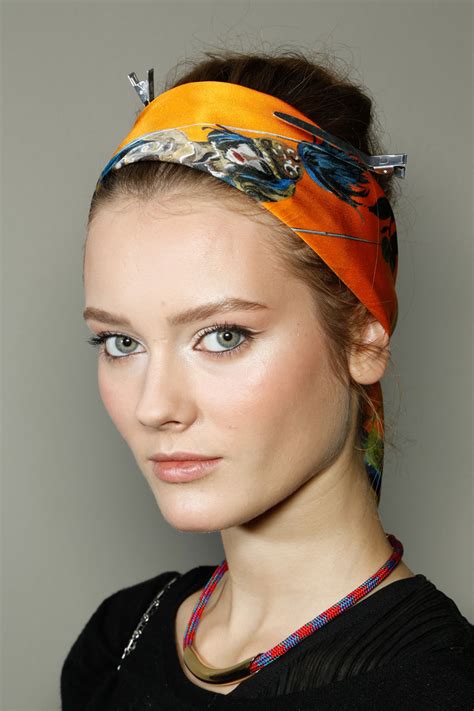1. Chemotherapy-induced Hair Loss: A Common Concern
Cancer treatments, particularly chemotherapy, often lead to hair loss, a common and distressing side effect for patients. According to the American Cancer Society, approximately 65% of chemotherapy patients experience complete hair loss. This can be a significant source of emotional distress, affecting self-esteem and body image.

2. The Benefits of Head Scarves & Wraps
Head scarves and wraps offer a practical and stylish solution for cancer patients experiencing hair loss. They not only protect the scalp from the sun and cold but also provide a sense of comfort, privacy, and confidence. By concealing the visible effects of hair loss, head scarves and wraps can help patients maintain a sense of normalcy and control during treatment.
3. Types of Head Scarves & Wraps
A wide variety of head scarves and wraps are available to cater to different preferences and styles. Common types include:
- Bandanas: Versatile square or triangular scarves made from various materials like cotton, silk, or satin.
- Turbans: Fitted headwear that provides full coverage and can be tied in different ways for a personalized look.
- Pre-tied head scarves: Convenient and easy-to-use scarves that come with a pre-determined knot or style.
- Wigs: Synthetic or human hair coverings that mimic the appearance of natural hair, providing a more realistic alternative.
4. Choosing the Right Head Scarf or Wrap
Selecting the right head scarf or wrap depends on personal preferences, comfort level, and treatment stage. Consider the following factors:
- Material: Opt for breathable and soft fabrics like cotton, bamboo, or silk that are gentle on the scalp.
- Coverage: Choose a scarf or wrap that provides adequate coverage for the desired level of privacy.
- Style: Explore various styles and patterns to match personal taste and complement outfits.
- Comfort: Ensure the scarf or wrap fits comfortably without causing irritation or pressure on the scalp.
5. Table: Materials for Head Scarves & Wraps
| Material | Benefits |
|---|---|
| Cotton | Breathable, absorbent, and hypoallergenic |
| Bamboo | Soft, antimicrobial, and eco-friendly |
| Silk | Luxurious, breathable, and moisture-wicking |
| Satin | Silky, smooth, and gentle on the scalp |
| Polyester | Durable, moisture-resistant, and wrinkle-free |
6. Table: Coverage Levels of Head Scarves & Wraps
| Coverage Level | Description |
|---|---|
| Partial | Covers part of the scalp, allowing some hair or skin to show |
| Full | Conceals the entire scalp, providing maximum coverage |
| Wide | Extends beyond the scalp, offering additional warmth and style |
7. Caring for Head Scarves & Wraps
Proper care of head scarves and wraps is essential for maintaining hygiene and longevity. Follow these guidelines:
- Wash regularly by hand or on a gentle cycle in the washing machine.
- Use mild detergents and avoid harsh chemicals.
- Air dry or tumble dry on low heat to prevent shrinkage or damage.
- Iron on a low setting if necessary to remove wrinkles.
8. Table: Effective Strategies for Tying Head Scarves & Wraps
| Strategy | Description |
|---|---|
| Triangle fold | Fold the scarf into a triangle and tie the ends around the nape of the neck |
| Crown knot | Position the scarf on the crown and tie the ends into a knot at the top |
| Turban twist | Twist the scarf around the head and secure with a knot or bobby pins |
| French twist | Roll the scarf into a cylinder and twist it around the head, tucking the ends in |
9. Table: Pros and Cons of Head Scarves & Wraps
| Pros | Cons |
|---|---|
| Conceal hair loss | Can be uncomfortable in warm weather |
| Protect from the elements | May require some practice to tie properly |
| Enhance style and confidence | Can be expensive, especially for wigs |
10. FAQs About Head Scarves & Wraps for Cancer Patients
-
Can I use my own scarves or wraps as head coverings?
Yes, you can use your own scarves or wraps if they provide adequate coverage and comfort. -
Are there any specific brands or retailers that specialize in head coverings for cancer patients?
Yes, there are companies that cater specifically to the needs of cancer patients, offering a wide range of head scarves, wraps, and other accessories. -
Is it possible to wear my head scarf or wrap when sleeping?
It is not recommended to wear a head scarf or wrap while sleeping as it can be uncomfortable and restrict blood flow. -
How often should I wash my head scarf or wrap?
Wash your head scarf or wrap after every use or as needed to maintain hygiene and prevent irritation. -
Can I wear a head scarf or wrap if I don’t have cancer?
Yes, head scarves and wraps can be worn by anyone as a stylish accessory or for various purposes. -
What are some alternatives to head scarves and wraps?
Other options for concealing hair loss include beanies, hats, or wigs, depending on your personal preference and comfort level. -
Where can I find support and resources for cancer patients experiencing hair loss?
Many organizations and support groups provide resources and emotional support for cancer patients, including information on head scarves and wraps.
11. Conclusion
Head scarves and wraps offer a practical, comfortable, and stylish solution for cancer patients experiencing hair loss. By concealing the visible effects of treatment, these accessories can help patients maintain a sense of normalcy, confidence, and self-esteem during their journey. With a wide variety of options available, patients can choose the head scarf or wrap that best meets their individual needs and preferences.
